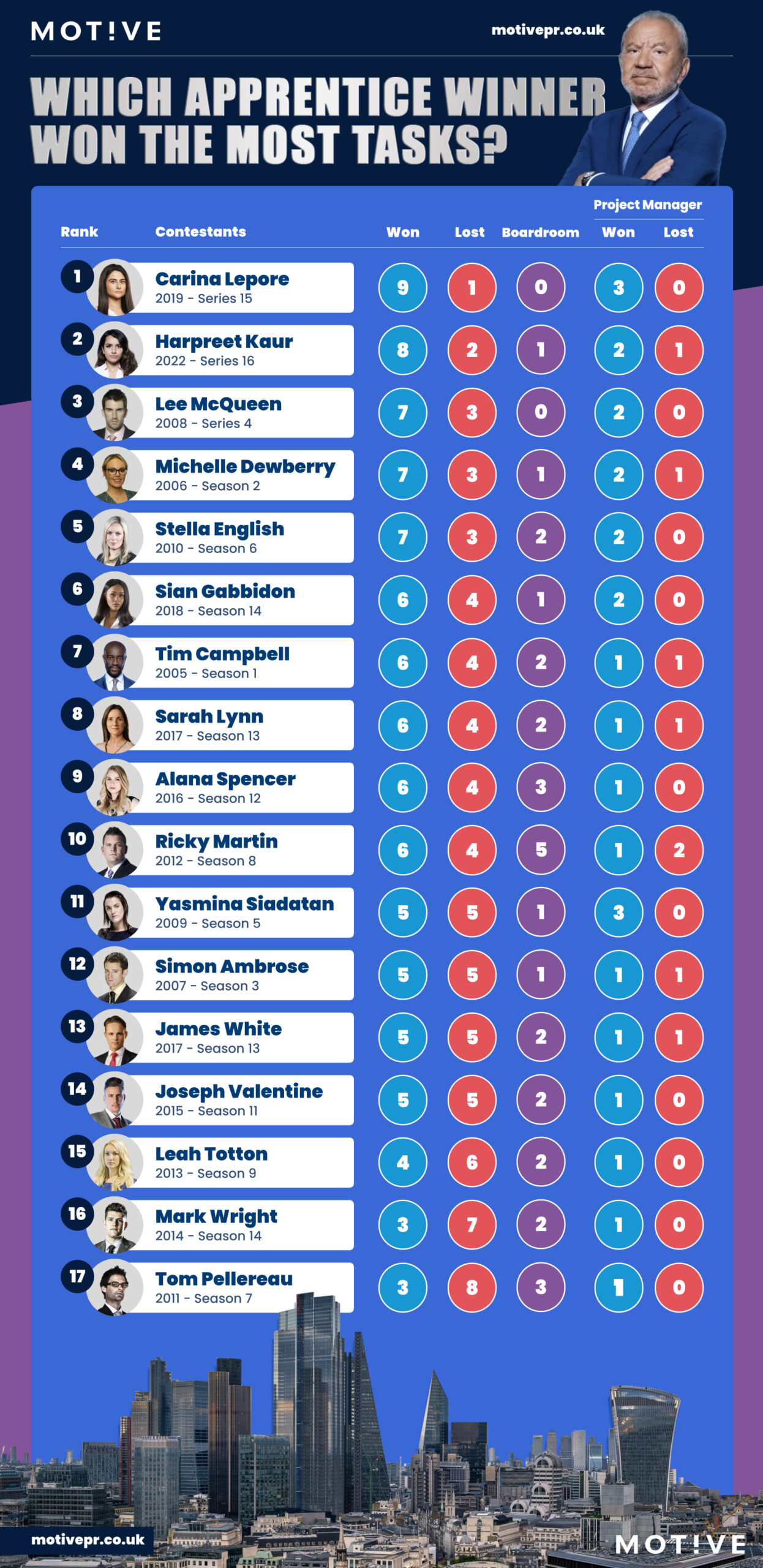How The Apprentice’s previous winners won Lord Sugar’s backing

The latest series of The Apprentice is approaching its climax but before Lord Sugar chooses his latest business partner new research has revealed how previous winners did in the boardroom.
Reality TV experts from marketing agency Motive tracked every winner of the hit BBC business show to discover who won the most and the least tasks on their way to securing Lord Sugar’s backing.
They found 2019 winner Carina Lepore was the most successful candidate in the show’s 18 year history winning nine out of ten tasks on her way to being selected as series 15 winner.
Last year’s winner Harpreet Kaur won eight tasks from a possible ten, making her the second most successful candidate in the history of the programme.
The least successful ever winner was Tom Pellereau, who was hired by Lord Sugar in 2011 despite winning just three tasks from a possible 11.
There have been 16 previous BBC series of The Apprentice but 17 winners as a dead heat resulted in two winners in 2017. Of the 17 winners, eight have been men and nine have been women.
The research also revealed how many times the show’s previous winners had been brought back into the boardroom and also showed their success during tasks in which they were project manager.
Once again Carina Lepore was the undisputed Queen of the show with three project manager wins under her belt and zero boardroom showdowns with Lord Sugar.
Only series five winner Yasmina Siadatan has won as many tasks as project manager but had been nowhere near as successful as Corina overall, losing five tasks before being chosen as the Apprentice in 2009.
Series one winner Tim Campbell, now back on the show as Lord Sugar’s aide, won six out of his ten tasks but had to fight for his place on the show twice in the boardroom during the programme’s first series in 2005.
The research was completed by marketing agency Motive whose reality TV expert Jack Proverbs said it revealed just how strong the show’s last two winners had been.
Jack Proverbs from Motive said: “The show’s last two winners, Harpreet and Carina, both absolutely smashed it and each of them ranaway with the show. They have been Lord Sugar’s strongest performing candidates ever in the history of the programme.
“Whoever wins this year won’t come close to those two amazing women. They both just absolutely bulldozed their way through the opposition to win the show. Whoever does gets Lord Sugar’s investment this year certainly has some big shoes to fill.”






